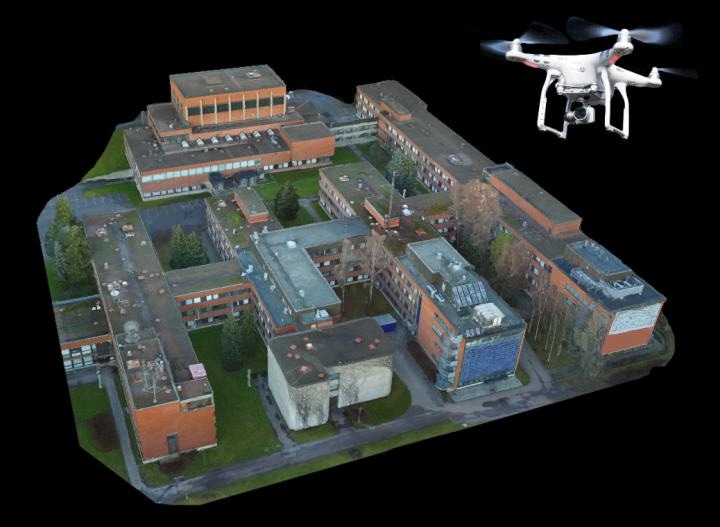Nov 7 2016
New technique provides an accurate 3D model, which improves the prediction of the propagation of radio waves at millimetre-wave frequencies.
 By using both the aerial photographs taken by the drone and photogrammetry software, researchers were able to create highly detailed 3-D models of urban environments. (Credit: Vasilii Semkin / Aalto University)
By using both the aerial photographs taken by the drone and photogrammetry software, researchers were able to create highly detailed 3-D models of urban environments. (Credit: Vasilii Semkin / Aalto University)
The development of mobile devices has set increasingly high requirements for wireless networks and the emission of radio frequencies. Researcher Vasilii Semkin together with a research group at Aalto University and Tampere University of Technology has recently tested in their research work how aerial photographs taken using a so-called drone could be used in designing radio links.
By using both the aerial photographs taken by the drone and photogrammetry software, they were able to create highly detailed 3D models of urban environments. These models can be used in designing radio links. Photogrammetry is a technique where 3D objects can be formed from two or more photographs.
‘The measurements and simulations we performed in urban environments show that highly accurate 3D models can be beneficial for network planning at millimetre-wave frequencies’, Semkin says.
Towards a more cost-efficient design process
The researchers compared the simple modelling technique that is currently popular to their photogrammetry-based modelling technique.
‘With the technique used by us, the resulting 3D model of the environment is much more detailed, and the technique also makes it possible to carry out the design process in a more cost-efficient way. It is then easier for designers to decide which objects in the environment to be taken into account, and where the base stations should be placed to get the optimum coverage’, Semkin explains.
In the future, it will be possible to utilise the technique in designing 5G wireless connections, among other things.
The article has been published on web IEEE Xplore Document and it can be read by clicking this link. (DOI: 10.1109/TVT.2016.2617919)
A remote-controlled drone helps in designing future wireless networks